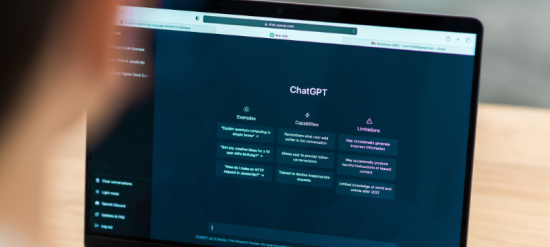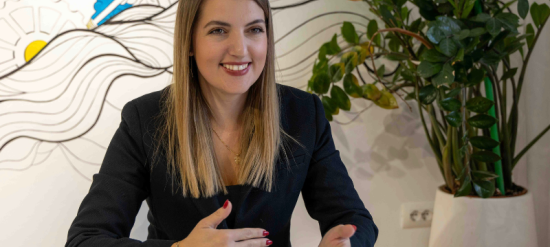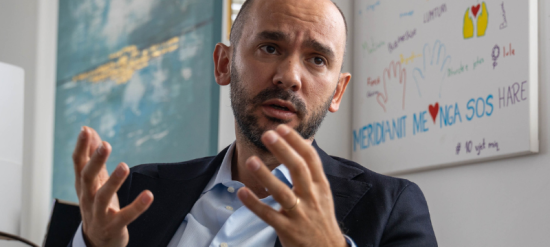Giving Kosovo 2022
Giving Kosovo 2022: Report on the State of Philanthropy
Divider text here
Catalyst Balkans has been tracking philanthropy in Kosovo and the Western Balkans since 2013. We publish this report in partnership with Kosovar Civil Society Foundation, as a part of the Citizen Engagement Activity funded by the United States Agency for International Development. Discover philanthropy in Kosovo during 2022 and how citizens, organizations, and companies have supported the social good, or learn more about our methodology here.
TOTAL RECORDED GIVING
3,455,000 EUR
Recorded amount
920
# of instances
![]()
1.9 EUR
Donated per capita
The year 2022 was a key year in the expansion of the philanthropy ecosystem in Kosovo. More than EUR 3.45 million in giving was recorded through 920 unique donation instances
The trends in giving have experienced fluctuations, with occasional significant increases. These spikes can be attributed to humanitarian crises, such as the 2019 earthquake in Albania and the 2020 COVID-19 pandemic. The year 2020 saw the highest level of giving, followed by a decline in 2021.
However, a considerable increase in giving was observed in 2022. This growth in philanthropy is predominantly focused on poverty relief efforts. We believe that the reason for this may be negative economic trends, including lower GDP projections for 2022 and high inflation.
TRENDS OF GIVING
This marked a 33% increase compared to the value of donations recorded in 2021. Excluding COVID-19 relief-related giving in 2020, both the recorded value and the number of donations reached the highest level recorded in Kosovo since Catalyst Balkans started tracking philanthropy in 2015. The recorded value of giving equaled EUR 1.9 per capita of Kosovo’s population.
CAUSES
Giving for poverty relief emerged as the most frequent cause to which donors gave in 2022 – increasing from 13.2% of all donations in 2021 to 55.9% of overall donations in 2022. Other key cause areas in 2022 included healthcare (10.5%), support to marginalized groups (9.2%) and education (8.5%). Seasonal giving accounted for 11.7% of all giving..
Donations made for the purpose of poverty relief primarily focused on one-off humanitarian support, such as food packages and providing individual housing for socially disadvantaged citizens.
DONORS
Mass-individual giving (giving by a number of unnamed donors collectively) was the primary donor type in 2022, comprising 33.6% of donation instances.
Known individuals were the second most frequent donor type (29.7%). This means that 63.3% of donation instances recorded in 2022 were donations made by individuals.
While giving by donors from the diaspora is spread across the donor types, donations sourced from the diaspora in 2022 amounted to 18.3% of all donations.
RECIPIENTS
Non-profit organizations emerged in 2022 as the most frequent recipient of donations (53.6% in 2022; 25.2% in 2021) changing places with individuals and families, which were the leading recipient type in 2021 (39.3% in 2022; 54.1% in 2021). This furthered a change in trend over the previous several years when most of the donations had been given directly to individuals and families in need.
Donations directed through local and national governments and public institutions garnered a smaller number of donations in 2022.
FINAL BENEFICIARIES
People in economic need were the final beneficiary group most frequently supported by the philanthropic community in Kosovo in 2022, comprising more than 65.4% of all recorded donations. This large percentage correlates with the high number of campaigns organized for the purpose of poverty relief during 2022.
Compared to 2021, the increase in the percentage of donation instances directed toward people in economic need was accompanied by a decrease in donations benefitting the population of specific local communities.
INTENDED EFFECTS OF GIVING
When analyzing the use of donations by recipients, Catalyst Balkans categorizes giving based on its intended effects: to support one-off humanitarian needs or to address strategic needs that make a long-term impact
In 2022, after a trend towards giving being more focused on strategic needs in previous years, a significant swing back towards humanitarian-focused giving took place, with 81.3% of all giving. This was the highest percentage of giving for short-term effects recorded by Catalyst since tracking started in 2015. This reversal of trend is due primarily to a high concentration of donations made for the purposes of poverty relief in 2022.
GEOGRAPHIC DISTRIBUTION OF GIVING
In 2022, the largest share of instances (35%) was directed to the Prizren region, which represents a change in the trend of Prishtinë being the most supported region. The increase in donations toward the Prizren region was correlated with the increase in humanitarian campaigns for poverty relief initiated by organizations with branches in Prizren. Mitrovicë was the second most supported region (25.4%), followed by Prishtinë (20.7%).
Get the infographic to see the data about giving in Kosovo in 2022.
This report is made possible by the generous support of the American people through the United States Agency for International Development (USAID). The contents are the responsibility of Catalyst Balkans and do not necessarily reflect the views of USAID or the United States Government.
The Citizen Engagement Activity in Kosovo is a five-year initiative implemented by Kosovar Civil Society Foundation (KCSF) in partnership with the United States Agency for International Development (USAID).

Highlights
Take a look at our daily selection of the most inspiring stories about giving in the Balkans.
#IDPwD24: Insights from Kosovo’s Philanthropy Trends
Charity is a powerful way for individuals to make a difference in their...
Crowdfunding has revolutionized how communities can support important causes...
Blog
Read our weekly tips, success stories and best practices for the nonprofit sector.
In today’s fast-paced digital world, capturing attention is harder than ever...
In an increasingly digital world, civil society organizations (CSOs) are...
World Mental Health Day, celebrated every year on October 10, emphasizes the...
Interviews
Read our weekly tips, success stories and best practices for the nonprofit sector.
In recent years, the IPKO Foundation has taken on an important role in...
“Freesia" Paper Factory is the only one in the region with the mission of...
Founded in October 2012 as a new concept of neighborhood markets, the company...









